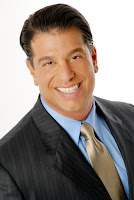Customer Loyalty – Does it work? - 7 Steps to Client Retention

A recent survey of from The Conference Board denotes that one of the greatest challenges a CEO faces is customer retention. Other issues are just as imperative, however client retention is included in the top five. Today’s client seeks loyalty and satisfaction; numerous surveys agree and illustrate angst amongst clients to receive satisfaction.
The best method to maintain clients and gain loyalty is to concentrate on the wants and needs of the client. Today’s client seeks value: a key competitive differentiator. Companies provide value by offering services not offered by others. Typical loyalty programs such as frequent flier, frequent purchase et. al. are not differentiators and do little for value. In fact, according to Gartner U.S. companies spent more than $1.2 billion on customer loyalty programs in 2003, yet the data does not illustrate a return on investment.
While research continues there remain several techniques to ensure success:
1. Company Culture. Ensure the corporate culture exemplifies customer service. A key exemplar is Southwest Airlines. Representatives smile when greeted and assist you from take off until touch down.
2. Differentiation. Provide something different, that others don’t. Exemplars are free samples discounts and other related services. A tanning salon recently offered Dollar Days for loyal clients, on a specific day of the week a regular tan costs one dollar.
3. Data. Companies have spent millions on customer relationship software, yet the data is either misused or dismissed. There exist several reasons but do not fear the data, use it to follow trends. Data will tell you where to define and apply techniques for the customer experience.
4. Community. Build community and gain dialogue with clients, this includes executives. No CEO should ever be too busy to meet with customers; they are in business to make customers!
5. Internal Controls. Customer service is as much an internal function as it is external. All employees must be treated with equanimity. Those abhorring employment illustrate dispassion to clients. Ensure employees know the industry, competitive trends and client data. Research for this study illustrates that 74% of employees are more productive and passionate when they are confident in their roles!
6. Caress Complaints. There are numerous client complaints and some valid. Yet take the time to review issues and resolve them quickly. Telecommunications and the automotive industry have taken heat for slow response times; they are getting better. However, clients desire quick and courteous problem resolution.
7. Modeling. Think about it. As CEO or director of an organization, you too are a consumer. What are the issues that bother you? Who are the exemplars that provide empathy? What are the differentiators? There is nothing wrong with modeling. Use what others do and duplicate it! Look at the items and issues that you are passionate about and bring them into your organization.
In the age where the world has flattened, competition has increased and it is harder to hear amongst the din, organizations must do more. Keeping loyal clients is about differentiation, buzz, value and water cooler conversation. Keep clients talking and they will return. Conduct little things and clients return. In the age when CEO’s worry about a myriad of issues, one of the easiest ways to increase profits, lower expenses and produce shareholder value is a loyal, confident and empathetic client base.
For more information please contact Drew Stevens PhD at drew@gettingtothefinishine.com
©Drew Stevens PhD. All rights Reserved.
About Drew Stevens PhD
Drew Stevens PhD is known as the Sales Strategist. Dr. Drew creates more revenues in less time. He is the author of seven books including Split Second Selling and Split Second Customer Service and Little Book of Hope and is frequently called on the media for his expertise. Sign up for Dr. Drew's newsletter The Sales Strategist at (drew3-143901@autocontactor.com) and review his new book Split Second Selling at www.gettingtothefinishline.com/products.asp Also visit Dr. Drew’s Blog located at http://drewjstevens.blogspot.com
Labels: CEO challenges, customer loyalty, customer service, Customer Service Training
Read more...




